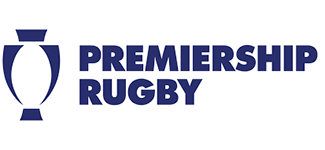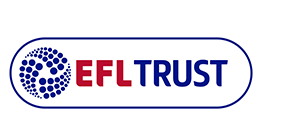CHAMPIONING
EQUALITY
Consciously inclusive talent aquisition for the Sports & Leisure Industry
level= was born out of a shared passion to ensure sport, business, and society become fair and fully sustainable for all.
Many of today’s sporting organisations understand this, but it requires more than just a conscience; it demands integrity and know-how.
PROVEN APPROACH
from our de-biased recruitment solution
increase in applications from ethnically diverse backgrounds
employee retention rate after one year
of candidates who got a job through our platform would never have been considered on CV alone
positive average candidate experience
LOOKING FOR A
CAREER IN SPORT?
I’m really excited about the recruits we now have! I honestly think it’s the best and fairest recruitment process I’ve been part of.
LEADERSHIP
EQUITY
➜
Readdressing elite-level inequality by rejecting traditional recruitment practices

NEWS

Bullying is something no-one should have to deal with. While we often associate bullying with childhood, the reality is that bullies can follow people throughout the entire lives, impacting the performance, and culture of workplaces. While conflicts in the workplace are natural, there’s a difference between misunderstandings and clashes among teams, and consistent abuse. Although it’s important for employees to stand up for themselves, and seek assistance when dealing with bullies, HR managers and business leaders also play a role. Direct line managers, supervisors, and executives also need to implement strategies to ensure they’re creating a supportive, respectful company culture. Here’s everything you need to know about overcoming bullying in the sporting space. Defining Workplace Bullying: Identifying the Signs To overcome bullying in the sports, leisure and recreation workspace, business leaders and their employees first need to recognise the signs. Bullying can appear in a range of forms, from name calling, to the deliberate isolation of specific employees by other individuals or groups. However, the Workplace Bullying Institute (WBI) gives the concept a clear definition. It says bullying is any repeated, harmful mistreatment of one or more people by one or more perpetrators. Workplace bullying can happen both offline and online, particularly in today’s world of hybrid and remote work. It can also include: · Name calling or abusive language · Ignoring, isolating, or excluding members of staff · Belittling or making fun of an employee · Scapegoating or blaming other employees for issues · Manipulation or coercion · Spreading rumours about an employee · Aggressive or violent behavior Even business leaders can be perpetrators of bullying, when they set their employees up to fail, disregard them, or overwhelm them with menial tasks. Workplace bullying is extremely common, with 30% of Americans saying they experience this issue in their profession. Unfortunately, the side effects can be disastrous for both businesses and individuals alike. Consistent bullying can cause stress, ill health, and burnout for employees. It also harms team productivity, and increases a company’s chance of talent turnover, leading to significant skill gaps and problems with long-term performance. Handling Workplace Bullying: Global Factors Workplace bullying in the sport industry is an issue that arises all over the world. While the negative impact it has on businesses and employees is consistent wherever you are, the solutions companies and team members can use to deal with bullying vary depending on location. For instance, the UK and Australian governments have both implemented anti-bullying legislation , such as the Equality Act in the UK, and the Fair Work Act in Australia. In these regions, organizations/organisations are encouraged to implement comprehensive anti-bullying policies, outlining unacceptable behaviours, reporting procedures, and consequences for perpetrators. Employees are also encouraged to deliver training and awareness programs, to educate employees about the effects of workplace bullying and how to recognize it. In the US, workplace bullying is addressed through various channels, including legal recourse. While there are no specific federal laws against bullying, many US companies still adopt anti-bullying policies to create a safe and inclusive workspace. Additionally, the US Equal Employment Opportunity Commission shares guidelines team leaders can use to address workplace harassment and bullying. Effective Strategies for Handling Workplace Bullying Though there are different regulations and legal solutions in place for workplace bullying depending on where you are in the world, business leaders can still experiment with a range of universally effective strategies for mitigation, no matter their location. Some of the best ways to combat workplace bullying include: 1. Establish and Share Clear Policies First, it’s important to develop and communicate clear anti-bullying policies for the entire workforce. These policies should outline examples of unacceptable behaviours, as well as the potential consequences for perpetrators. Ensure team members understand which reporting mechanisms are in place to ensure they can seek out assistance if they feel harassed by another team member. All employees should have access to accessible, confidential reporting mechanisms, to help them seek out help without fear. 2. Promote a Respectful, Inclusive Culture Today’s most innovative companies are already investing in Diversity, Equity, and Inclusion initiatives, designed to create equality and respect between team members. This is important at a time when 76% of job seekers and employees believe DEI initiatives are crucial. Promoting a culture of respect and inclusion in the workplace helps to minimise the risk of bullying. Team members should be encouraged to embrace the diverse characteristics of their work mates, and reminded that harassing behavior will not be tolerated. Leaders should set examples, by consistently treating team members with dignity. 3. Invest in Training and Education Investing in educational programs in the workspace isn’t just crucial to give employees access to new technical skills or improve workplace engagement. It can also be a valuable way to promote bonds between team members, and hone soft skills. Consider investing in educational resources that focus on teaching valuable communication, collaboration, and cooperation skills. Provide team members with educational resources to help them understand the effects of bullying, and what they can do to recognise, address, and even prevent the issue. 4. Respond to Reports Correctly Simply ensuring employees in the workplace can report instances of bullying isn’t enough. Companies also need to be willing to act rapidly when an employee is facing harassment. All reports issued by team members should be investigated thoroughly, promptly, and impartially. The consequences for perpetrators should be significant, but also consistent and fair, based on the nature of the situation. Additionally, business leaders in the sport industry should ensure support is available to victims following the event. This could include offering counselling, mediation, or coaching sessions. 5. Stay Vigilant Unfortunately, even as business leaders continue to invest in initiatives to make their companies more welcoming and supportive to employees, bullying is still an issue. In today’s world of hybrid and remote work, it can be even harder to spot problems, particularly when harassment happens online, or through video meetings. To stay on top of the problem, managers and business leaders need to be vigilant about monitoring the workplace environment. Pay attention to the behaviours of employees, investigate instances of severe stress and burnout, and constantly promote team bonding. Workplace bullying is unfortunately a global, persistent issue, that requires attention from both employees, and business leaders. Addressing instances of bullying effectively isn’t just the key to creating a more attractive company culture. It’s also important to ensuring employees can feel engaged and productive at work, and helps to reduce the risk of talent turnover. The right initiatives can even help to make your business more appealing to industry talent.

Level= takes great pride in our recognition for outstanding work in the sports industry at the esteemed Football Business Awards held in London in May. We were honoured to receive the Silver Award in the Equality, Diversity, and Inclusion category. This award is a testament to our commitment to putting diversity at the core of our mission and engagement. We were in excellent company, with notable nominees including Brighton & Hove Albion FC, Aston Villa FC, Chelsea FC, Liverpool FC, and Watford FC. Our purpose is clear: to empower every sports organisation with inclusive recruitment practices designed to eliminate bias and ensure fairness in hiring decisions. We've collaborated on numerous projects with Brentford FC and The Premier League, aligning with their dedication to equality, diversity, and inclusion through our consciously inclusive approach to hiring. By proactively reaching out to diverse communities and employing a debiased process, Level= has increased the representation of underrepresented groups within these organisations. Jon Varney, CEO of Brentford FC, underscores the benefits of our anonymisation process: "We piloted an anonymous recruitment process for several executive roles within the Club. This approach has allowed numerous candidates from underrepresented groups to advance to the final stages and secure full-time contracts with us." Amy Field, The Premier League Policy Department Operations Manager, recognises the limitations of traditional recruitment methods like CV and cover letters: "It's evident that, among the multitude of applications we typically receive, we might have overlooked some candidates based solely on their work history." At Level=, we persistently challenge the conventional approach to bring about positive change in sports recruitment. Our commitment to creating a level playing field for all candidates has resulted in attracting a more diverse pool of talent, all while significantly reducing the recruitment time for dedicated hiring teams. Click here to see the organisations we have worked with













